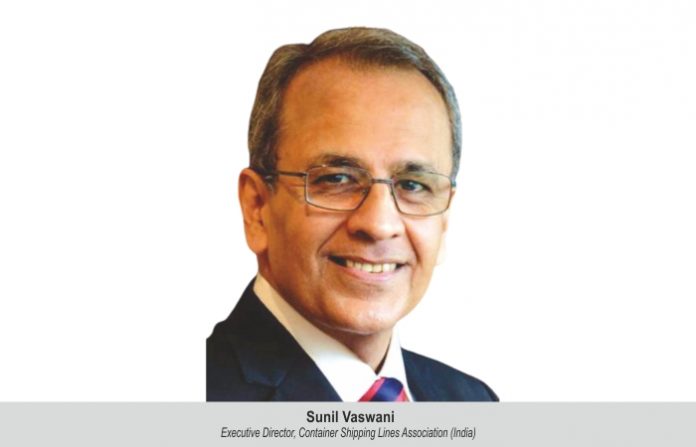Intra-Asia volumes have improved. Indian export volumes in July this year increased by 9% compared to the same period last year. Import volumes grew by 20% in July 2023 compared to July last year. Besides with the China+1 policy being adopted by West & India, the lines are keenly watching these developments.
In the past three years, the world witnessed unprecedented events such as COVID and the Russia-Ukraine war. All this had an impact on the global trade and container shipping. With demand exceeding supply during COVID as far as space and equipment were concerned, the shipping lines did all they could to bridge the gap.
New services were launched by the shipping lines to assist the trade. The shipping lines, who placed orders for more capacity during COVID, started receiving deliveries in 2022 and 2023—some were ultra large vessels of 24,000 TEU capacity, which increased the global trade. These deliveries will also continue next year.
All this resulted in supply exceeding demand and pushed the freight rates back to pre-COVID levels. The steps taken by the USA to beef up its economy and release pent up demand in the Western world is somewhat encouraging for cargo flows.
Intra-Asia volumes too have improved. Indian export volumes in July this year increased by 9 per cent compared to the same period last year. Import volumes grew by 20 per cent in July 2023 compared to July last year. Besides with the China + 1 policy being adopted by Western countries and India, the lines are keenly watching these developments. Some of the key initiatives are as follows:
Increased port capacity: Currently Mundra Port can handle 396 metre long vessels with 16.5 metre draft and 18,000 TEU capacity. More Indian ports need to follow suit. Capacity at Indian ports needs to be upgraded, keeping in mind the future volumes.
Green initiatives: The shipping lines made changes in the engines of their vessels/fitted scrubbers and ordered new vessels with modern machinery for use of low sulphur fuel. As most newly built ships are retrofitted for shore power, bunkering facilities for green energies such as LNG, hydrogen, methane are needed for these new builds to call at Indian ports.
It would help if mixed trains, operated by CONCOR, were discontinued and dedicated trains were to be operated. If they are not feasible, the mixed trains should call at the terminal for which they have the maximum containers on board.
Port charges, custom processes: Currently, vessel related charges at Indian ports are higher compared to foreign ports. The unit cost per move works out higher for a vessel calling at Indian ports. Uniformity should also be brought into the processes.
Digitization: To assist the trade, the shipping lines have taken steps to promote digitization. These include releasing eBLs, which help in reducing time and cost of transaction. Although this is acceptable in many other countries, the banks in India still need to recognize this. An electronic Bill of Lading (eBL) is an end-to-end digital BL encrypted by Blockchain, which makes the eBL a user-friendly alternative to a paper BL.















